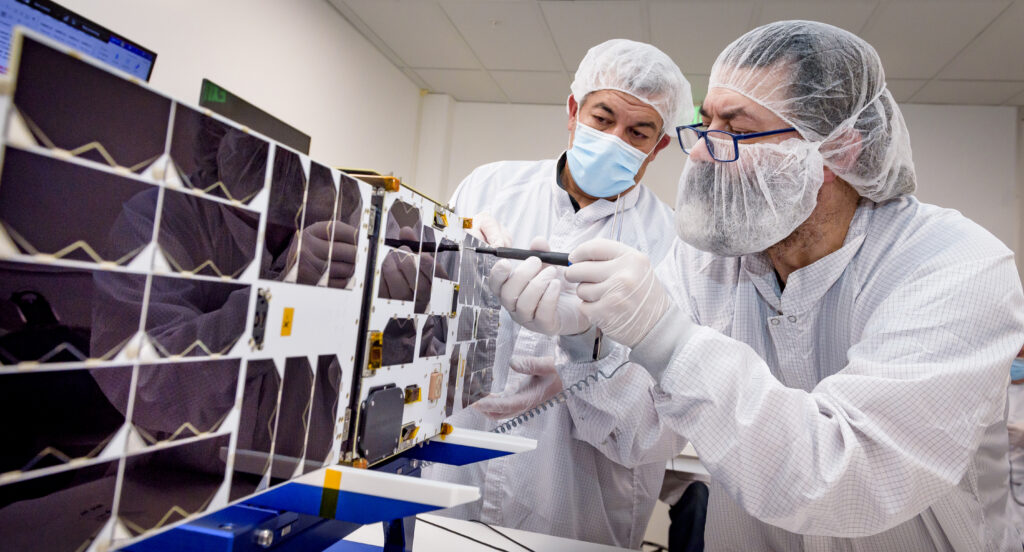Navigating the Cosmos: NASA’s 2024 Breakthrough Innovations
NASA is leading the way in pioneering advancements aimed at enhancing life on Earth and beyond. Among its notable recent innovations are cutting-edge technologies for harnessing solar energy for space exploration, transmitting information to spacecraft across unprecedented distances, and investigating the potential habitability of Jupiter’s moons. These achievements were celebrated as part of TIME’s Inventions of 2024.
“The incredible talents at NASA—whom I affectionately refer to as wizards—have been revolutionary in technology and invention for more than six decades,” stated NASA Administrator Bill Nelson. “From launching the Europa Clipper, our most substantial satellite for planetary exploration yet, to developing advanced solar sail systems and utilizing laser communications from deep space, we are expanding our understanding of life both on Earth and throughout the universe to benefit everyone.”
Harnessing Solar Power: The Advanced Composite Solar Sail System
The Advanced Composite Solar Sail System developed by NASA is an experimental technology with the potential to enable spacecraft to “sail” through space using sunlight as a propulsion mechanism. Similar to how a yacht adjusts its sails based on wind direction, a solar sail alters its path by positioning attached booms that support it from different angles. This mission employs advanced composite boom technology that offers enhanced rigidity, reduced weight, and greater stability under extreme temperature variations compared to earlier models. After its launch on April 23 via Rocket Lab’s Electron rocket, engineers achieved their primary milestone by successfully deploying both boom and sail structures in August. The next phase involves demonstrating their ability to maneuver effectively while in orbit.
The outcomes from this mission could pave the way for alternatives to traditional chemical or electric propulsion methods while informing larger-scale future missions such as satellites designed for monitoring space weather.
Laser Communication Breakthroughs from Deep Space
NASA’s Psyche mission launched a groundbreaking optical communications demonstration on October 13, 2023, achieving new records in data transmission rates back home as it progresses through deep space. To illustrate these impressive laser communication capabilities, high-resolution images and telemetry data have been transmitted hundreds of millions of miles back alongside unique streams like that featuring Taters—the cat—engaging with a laser pointer. Led by NASA’s Jet Propulsion Laboratory (JPL) located in Southern California, this experiment has also successfully communicated optically over vast distances reaching out towards Mars’ furthest orbit relative to Earth.
Exploring Europa: A Search for Life Beyond Earth
As one of NASA’s most ambitious undertakings yet—the largest craft ever built specifically targeting another celestial body—the Europa Clipper mission marks an exciting endeavor focused exclusively on studying potentially habitable ocean worlds outside our planet. Equipped with nine scientific instruments alongside a gravity assessment toolset, this mission aims at understanding whether conditions exist beneath Europe’s icy crust that may be conducive to life forms.
Scientific evidence suggests there lies an extensive salty ocean beneath Europa’s frozen surface along with indications of organic compounds potentially paired with energy sources below ground level. Launched October 14th with plans set forth through JPL management styles utilizing partners like Johns Hopkins Applied Physics Laboratory (APL), success will see them conducting nearly five dozen flybys around Jupiter between now until they reach their target moon by 2030—a comprehensive effort intended primarily toward mapping thicknesses within ice layers while investigating geological features if any reveal compositions indicative thereof!
A Collaborative Network Driving Innovation
The initiative behind the Advanced Composite Solar Sail System relies heavily upon contributions made by teams within several key locations: responsibility falls particularly onto Ames Research Center based out Silicon Valley; meanwhile members managing overall constructions ultimately seen out via hands from Illinois-Langley facilities showcased excellence too! Additionally partners involved also reach into funding realms orchestrated directly under STMD spheres along bunkered workspaces managed together previously stated Marshall Space Flight Center along pursuit paths aligned strategically across diverse technological sectors driven forward mainly thanks largely to invaluable participation fostered during Small Business Innovation Research programs targeted more broadly toward aspiring innovators nationwide striving likewise upward over time !
A Comprehensive Partnership Approach
This collaborative design effort comprises not only those mentioned above but sees focused input generated through teams engaged collectively involving Caltech located down Pasadena routes executed thoroughly via cross-pollination between numerous labs where ideas gel constantly unbound typically embracing solutions crafted elegantly exploiting latest technologies against backdrop evolving rapidly nowadays considering larger context demands replacements must keep pace match shifting paradigms emerging continuously trending ever deeper depths transporting marvelously far! >Explore further about these iconic missions here!
